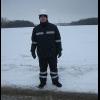|
|

Natural Gas Dehydration With Glycols - Meg Or Teg
#1

Posted 28 September 2012 - 01:17 AM
I am new in gas dehydration with glycols, on our plant we use MEG solution (80 % MEG, 20 % water) to reduce hydrate formation temperature (not for remove water) and propane refrigeration loop to meet water dew point. HC recovery is not an issue for us. We are looking another technology - TEG dehydration with absorber (gas - glycol contactor)m which can be used for only gas dehydration. HC recovery is not an issue. My question is - only TEG (99% mass, or less or bigger) can be used to meet water dew point specification? Can we use MEG solution (80 % MEG, 20 % water) instead of TEG solution ?
Thanks for your answers.
Dmitry
#2

Posted 28 September 2012 - 11:20 AM
Bobby
#3

Posted 29 September 2012 - 10:59 AM
If you are proposing to produce pipeline quality natural gas, then the TEG dehydration process is the usual and conventional process applied world-wide. Usually this process is applied on compressed natural gas at 100 barg pressure. Please refer to the countless threads on this topic within our Forums by using the SEARCH feature. You will find a lot of useful information in these past threads, including flow sheets and typical mass balances I have uploaded.
The degree of water removal is determined by your site conditions and pipeline characteristics. Here, in the USA, our pipelines employ a design value of 7 lbs of water/Million Scf of natural gas as the maximum allowed. If you are traversing Siberia with a pipeline, it is obvious you would require a much lower figure. I have used TEG to produce a gas with as low as 3 lb/MMScf. I believe you can achieve even lower values, but this would have to be substantiated.
The triethylene glycol employed as the drying solution is circulated as essentially a 100% pure “Lean” glycol stream into the TEG contactor. You regenerate the subsequent “Rich” solution using a TEG Stripper-Reboiler system that is driven by the heat input into the reboiler. The heat input medium is usually one of 3 options:
- Direct-fired with natural gas;
- Thermal fluid;
- Electric resistance elements.
#4

Posted 01 October 2012 - 12:52 AM
Although you didn't say, it sounds like you are looking to abandon the propane refrigeration. If this is the case, and I see no other reason that you are evaluating alternatives, you will need a TEG contactor and regenerator to meet the typical pipeline gas specification.
Bobby
We are happy with propane loop on our EPF, for future gas treatment unit we are looking for another technology, since we do not have too much HC and only want to meet water dew point.
Thnaks
#5

Posted 01 October 2012 - 12:58 AM
Thanks for reply. In Ukraine we need to meet Dew point temperature of the water at abs. pressure 3,92 MPa ≤ -10°C. Water content can be less or bigger than 3 lb/MMScf. I didn't see MEG solution as well, and just want to understand why only TEG can be used
Regards,
Dmitry
#6

Posted 01 October 2012 - 03:34 AM
For dehydration, MEG is also applicable, but due to some disadvantages such as higher vapor pressure, higher energy requirements and formation of corrosive degradation products compare to TEG, it does not used.
Regards,
Royen
#7

Posted 03 October 2012 - 10:12 PM
#8

Posted 10 October 2012 - 02:39 AM
#9

Posted 13 October 2012 - 01:55 AM
Regards,
Nasiruddin
Similar Topics
Teg DehydrationStarted by Guest_Root_* , 22 Aug 2022 |
|

|
||
Maximum Natural Gas Flow Through OrificeStarted by Guest_ukrche_* , 10 May 2024 |
|

|
||
Heating Of Natural GasStarted by Guest_kaidlut_* , 01 May 2024 |
|

|
||
Tank Blanketing With Natural Gas/ Vapor Recovery SystemStarted by Guest_MethanolPlant_* , 26 Apr 2024 |
|

|
||
Conversion Of M3 Of Natural Gas To M3 Of LngStarted by Guest_sachico28_* , 30 Sep 2023 |
|

|

 FB
FB








